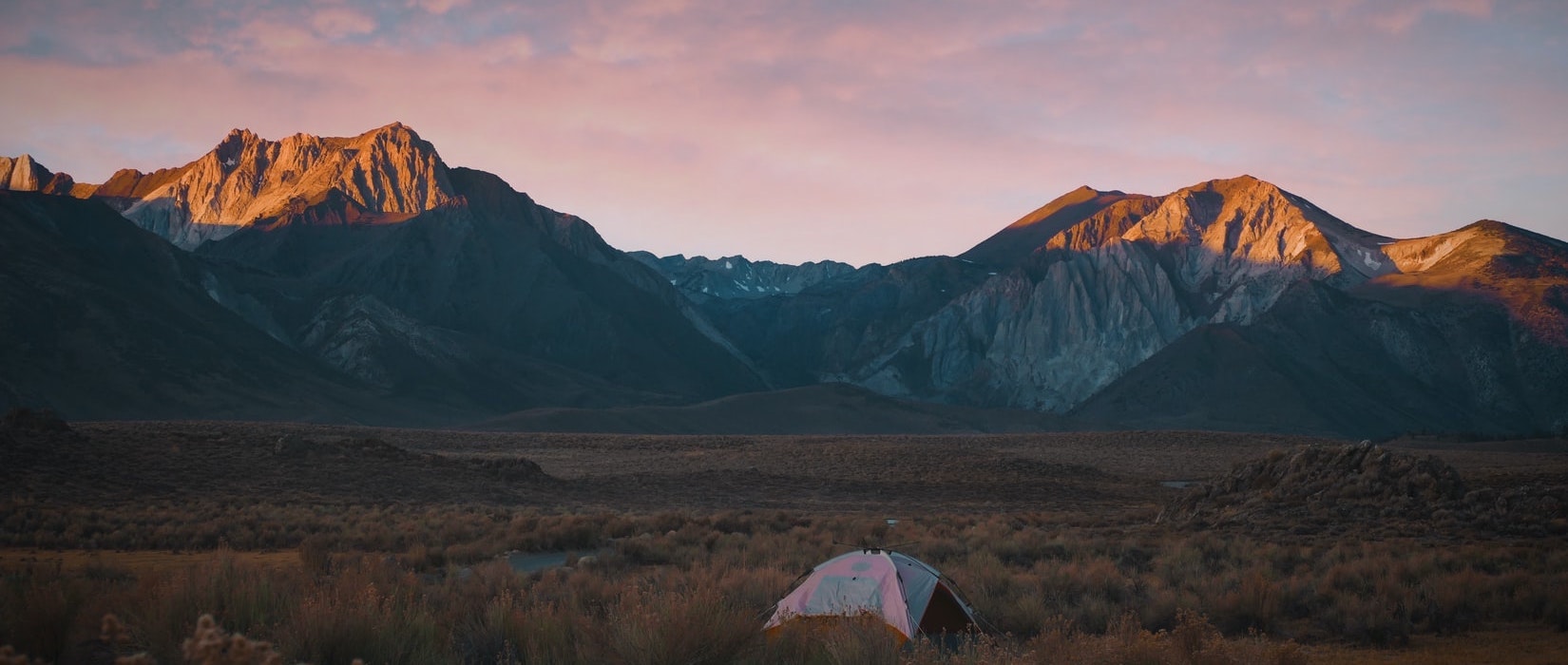
For some, camping is the highlight of summer, for others a year around passion. Fortunately there are tons of camping options across the US – ranging from well maintained camp sites with picnic tables, primitive camping sites, all the way to dispersed camping where you set up camp outside of designated campgrounds in remote areas – often in land managed by the U.S. Forest Service, Bureau of Land Management or other state forest land.
- What is Dispersed Camping
- Where Can You Disperse Camp?
- Fees, Licenses, and Permits Required for Dispersed Camping
- Dispersed Camping Rules
- Dispersed Camping Rules
- Dispersed Camping Guidelines & Tips
- General Dispersed Camping Guidelines, and Tips
- Dispersed Camping FAQs
- Dispersed Camping FAQs
- Dispersed Camping Resources
- Dispersed Camping Resources, Apps and Maps
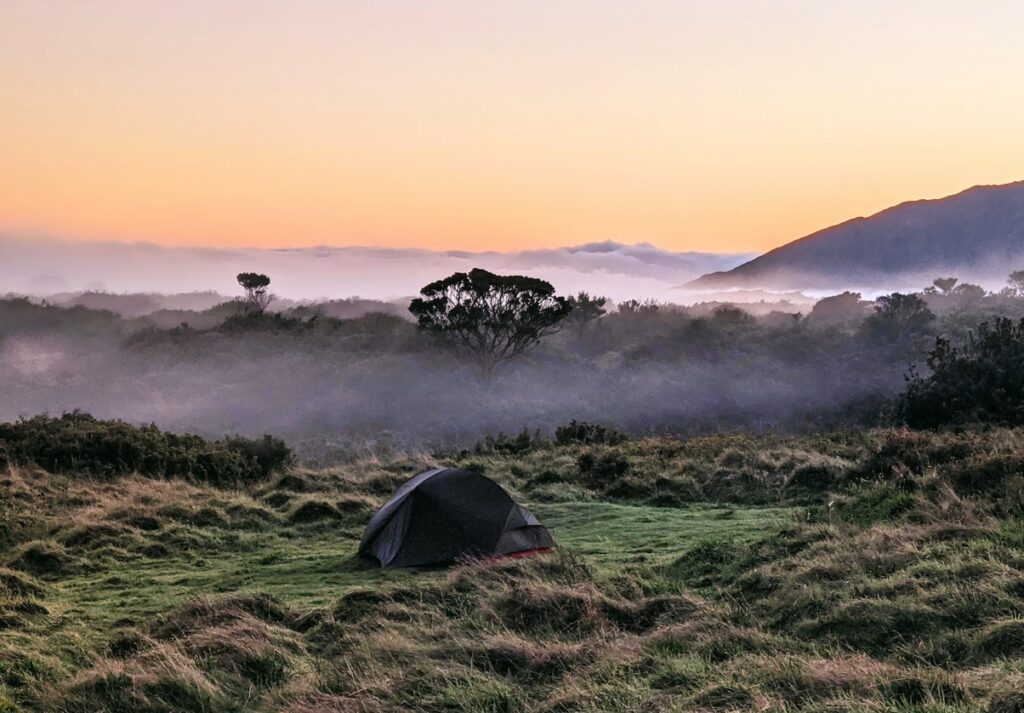
What is Dispersed Camping
Dispersed camping is camping on public lands, not in a designated campsite. Typically dispersed camping is on Bureau of Land Management (BLM), National Forest, Wildlife Management Areas, state forest land, or recreation areas without any amenities such as potable water sources or toilet facilities.
At first, some individuals might have concerns about fewer amenities, like trash cans, reservations, running water, the lack of designated campsites, picnic areas, food storage, etc. That said, there are many unique positives about dispersed camping that are hard to replicate in campground like an unparalleled view of the stars, restful solitude, escaping distractions of life, better odds of encountering wild animals, and the ability to get off the grid and enjoy camping in the midst nature.
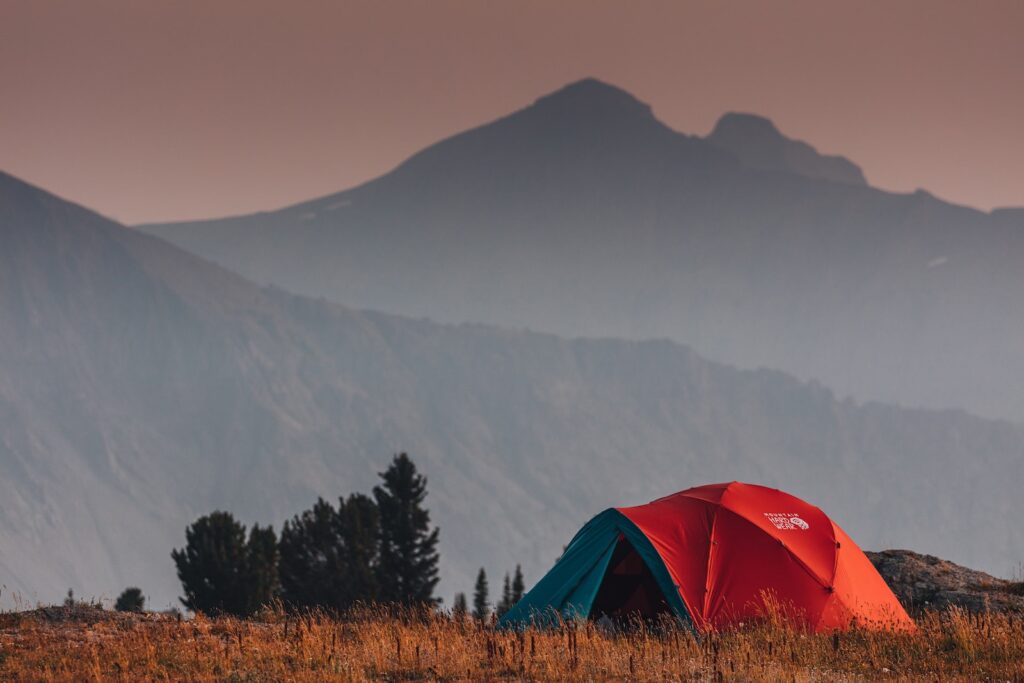
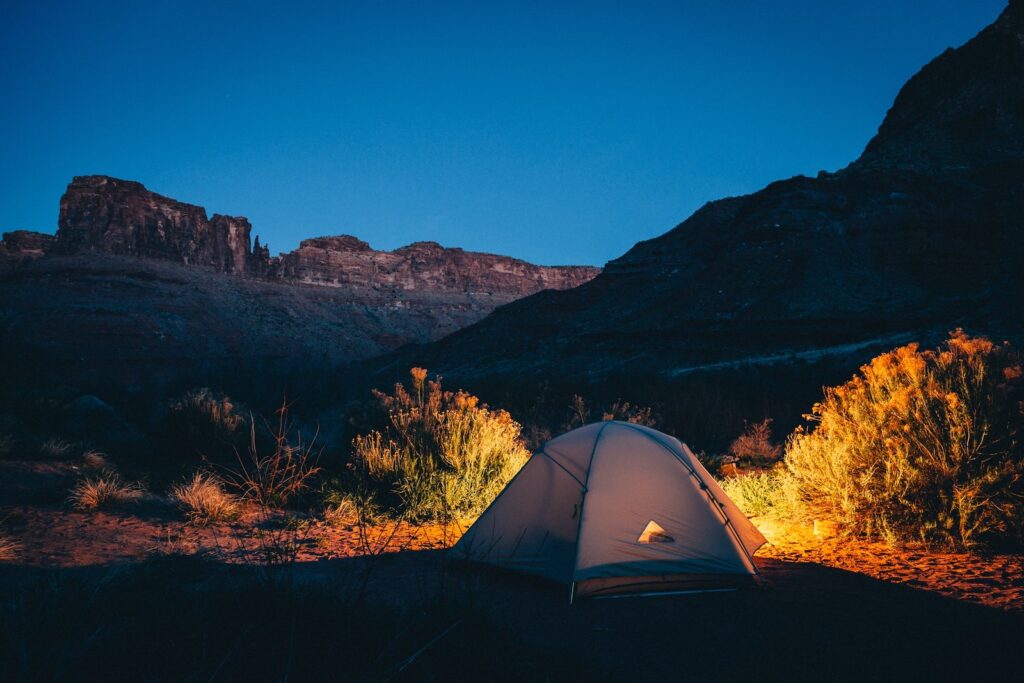
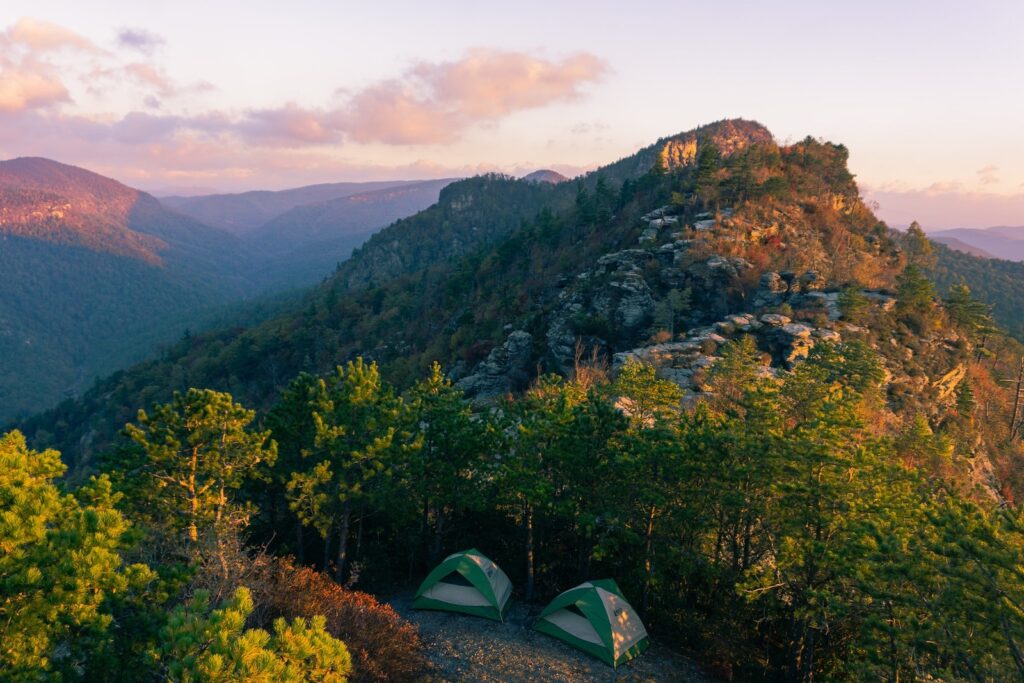
Where Can You Disperse Camp?
There are different dispersed camping regulations for each distinct land area. You can start by searching Google Maps for BLM, National Forest, Wildlife Management Areas, and state forests in your area. To make sure you follow all local regulations, you should give the nearest ranger station or BLM office for guidance and complete list of rules and check if there are any additional requirements.
The Bureau of Land Management is part of the U.S. Department of the Interior and manages land in the United States. The BLM is in charge of land in the Western US, deserts, and open landscapes. You can camp in Vans, RVs, and sometimes tents on BLM land. On BLM land, there is a possibility of waking up with cattle or sheep grazing in your campsite since BLM land is used for various purposes.
National Forests are public lands that belong to the Forest Service. National Forests are in almost every state in the United States, and they often border National Parks —although it is illegal to camp in most National Parks and other areas (sprawling 85 million acres of public lands) maintained by the National Park Service. You can camp in National Forests with RVs and tents. Most National Forests allow dispersed campers to stay for two weeks, although the limit depends on the Forest’s regulations.
Wildlife Management Areas and state forests are run at the state level and have a wide range of regulations – you will need to check in with your local rangers or land managers responsible for these areas.
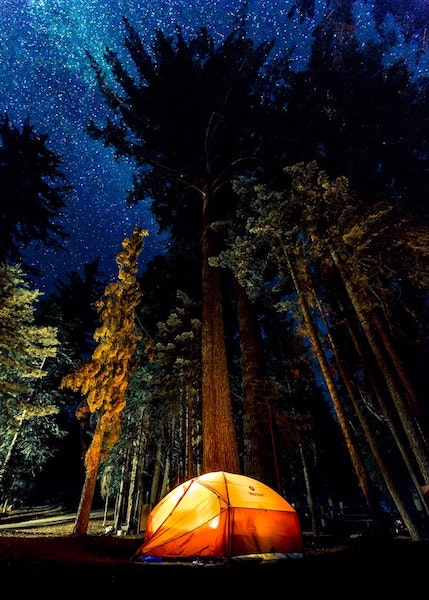
Fees, Licenses, and Permits Required for Dispersed Camping
Usually it is free to dispersed camp – In some land areas there are local fees so it is always good to double check before heading out.
National Forests Dispersed Camping Costs
Typically there are no fees or permits required for dispersed camping in National Forests. Use the U.S National Forest Service interactive map to find forests and more details.
BLM Dispersed Camping Costs
Generally dispersed camping outside of developed areas and campsites is free on BLM land. Specific areas may have local fees imposed – call your BLM office before heading out. More details.
Dispersed Camping Rules
Dispersed Camping Rules
Every camping location has its own specific set of rules. If you’re wondering, “where is dispersed camping allowed,” some of these locations and their camping rules are:
National Forests Dispersed Camping Rules
National Forests can differ in dispersed camping rules, but a standard practice they all have is that you can camp everywhere besides developed campgrounds and recreational areas. Here are some other rules to consider:
- Each National Forest has different rules for the number of days your are allowed to dispersed camp. Look up your forest here.
- Do not overstay your allotted days in the forest as to avoid adverse effects on natural resources.
- You must be self-contained (bring your own water, toilet supplies, pack your trash out).
- Do not set up your campsite within 100 feet of any water source (such as streams and rivers), roads, or trails.
- Obey any campfire or burn bans.
- There are bears in the National Forest, so make sure you follow safety precautions while camping and store food properly.
- Ensure you practice principles of leave no trace.
- Call the local Forest Service to see if there are any restrictions.
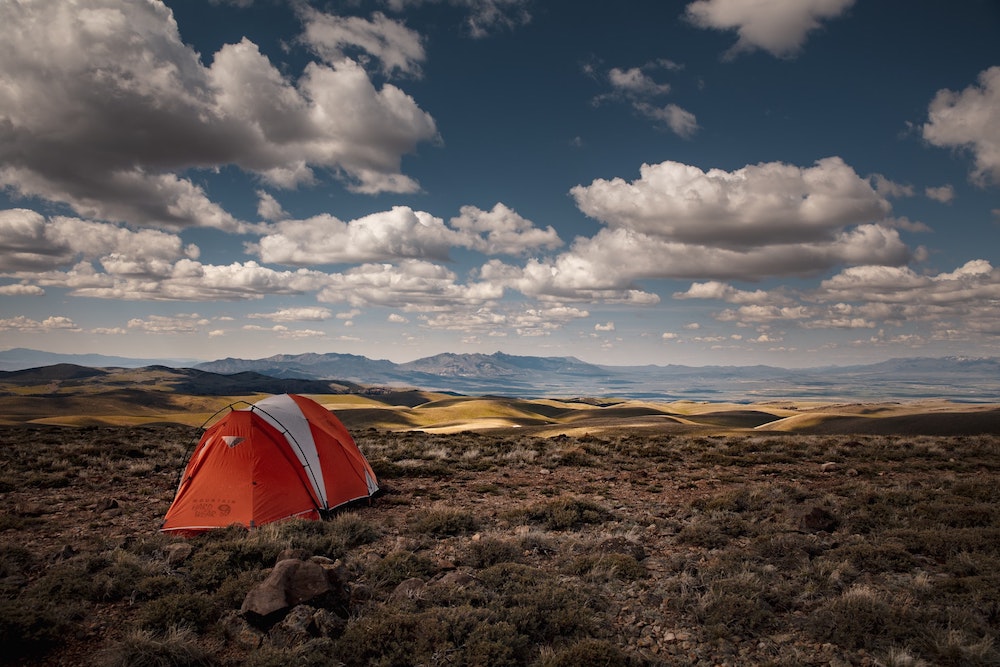
BLM Dispersed Camping Rules
BLM land tends to have more cohesive and consistent rules than National Forests for dispersed camping but there can still be local variances. Here are the standard rules for dispersed camping on BLM land:
- You can camp in the Bureau of Land Management areas for 14 days before having to move at least 25 miles to another spot. This is to minimize damage on sensitive areas due to prolonged human impact.
- Choose dispersed sites that have already been camped on if possible.
- Make sure you use existing camp stoves and fire rings if possible.
- Dispose of all waste properly.
- Do not leave anything unattended for more than 10 days (12 months in Alaska)
- Set up your camp at least two hundred feet away from all water sources.
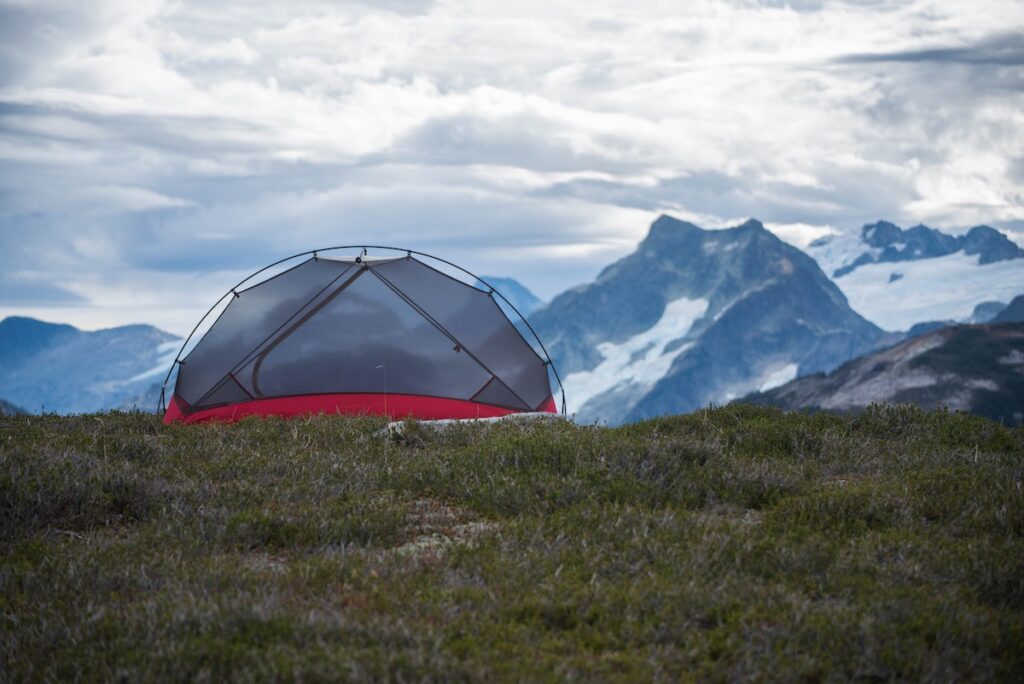


State Forest Dispersed Camping Rules
Dispersed camping is also allowed in many state forests. Often, state forests allow dispersed camping unless they state otherwise. The following items are best practices rules to follow while camping in state forests:
- Bury human waste and animal waste or parts— at least 150 feet away from any source of water or anywhere it can be a public health hazard.
- Don’t dig the ground surrounding your tent.
- Only collect the wood you see lying around the forest ground.
- You must not build any permanent structures on the forest grounds.
- Make sure you take care of your own trash removal from the forest grounds.
- Don’t block roads, gates, or trails with your vehicles or tents.
Dispersed Camping
Guidelines & Tips
General Dispersed Camping Guidelines, and Tips
Leave No Trace
Leave no trace is a popular phrase you’ve likely heard if you’ve done much camping or hiking. In short, it means when you’re done camping (or hiking) no one should be able to tell you’ve been through. This is more than a good idea, it’s the best way to preserve open spaces and forests to keep our land in pristine condition.
Given that you’ll be “wild camping” (as some call it), it is crucial to plan ahead and follow the 7 principles of Leave No Trace:
- Plan Ahead and Prepare
- Travel & Camp on Durable Surfaces
- Dispose of Waste Properly
- Leave What You Find
- Minimize Campfire Impacts
- Respect Wildlife
- Be Considerate of Other Visitors
How to Choose a Campsite
When choosing a campsite, the goal is to pick a spot that will allow for a great camping experience while minimizing any impact on wildlife, plants, or any other vegetation. Here are some tips to pick out the perfect campsite:
- Setup your camping area at least 100 feet (about 35 adult steps) away from water sources, trails, or roads.
- It is ideal to setup camp in a spot that has obviously already been camped in to avoid impacting additional surrounding areas.
- If camping in a pristine area with multiple tents, spread out tents to avoid creating a heavier impact on a smaller area.
- When setting up a tent, make sure to check for objects like rocks or branches and clear them out of the way (nobody likes a rock right where their sleeping bag is!)
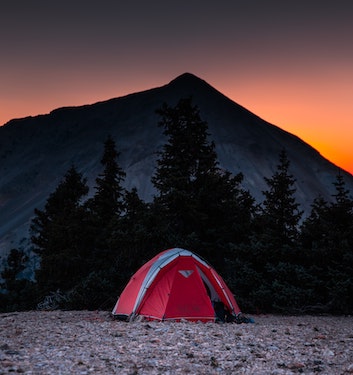
How to Get Safe Drinking Water
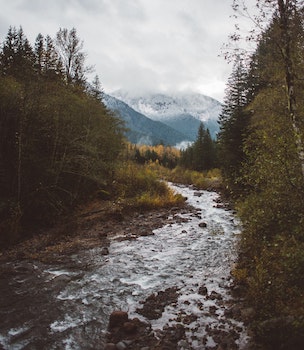
As dispersed camping does not typically have potable water sources, you will have to be responsible for supplying your own drinking water. No matter how idyllic a natural water source may look, never drink the water directly! It may have bacteria or microscopic parasites which can make you sick.
When dispersed camping, you have three options to get safe drinking water:
- Bring your own potable water (this works best if you are car camping, or not going far on foot from your vehicle).
- Bring a portable water filter if you will be hiking miles of trails to get to your own campsite – provided you will be camping near a stream or lake where you can get water.
- Boil water from a nearby stream or lake to kill any bacteria or parasites (again a better option for more remote camping)
How to Go to the Bathroom When Dispersed Camping
The best way to go to the bathroom when dispersed camping is to dig a cathole for your waste. Make sure your cathole is at least 8″ deep, at least 200 feet from water, trails, or your campsite, and fill in your cathole with dirt when you are done. Finally, cover up and disguise your cathole with leaves, dead wood, or other nearby natural elements.
While you can use leaves or other natural items to wipe, you should make sure that they aren’t poisonous. Used leaves can be placed in your cathole. If you want to bring wipes or toilet paper, you should bring a container to store them in until you can dispose of your trash in garbage cans when you return to society.
How to Make a Dispersed Camping Campfire
You are allowed to have campfires in most places unless there are fire restrictions in place. You are responsible for finding out whether a particular location has fire restrictions – these are typically in place during the time of year with high fire season. You can find out by contacting the manager of the public land you want to camp on.
While existing fire rings are great, typically you won’t find one when dispersed camping. Create a fire pit for your campfire by placing rocks in a 2 foot diameter circle. Your campfire should be at least 100 feet from any water source and avoid making your fire near trees with low hanging branches that could catch on fire.
Use dead wood found nearby or bring your own firewood. Don’t leave your campfire unattended and when you are done make sure the fire is completely out. Stir the campfire to make sure there are no hot embers hiding in the ashes. You can put soil on the ashes to help make sure the fire is all the way out.
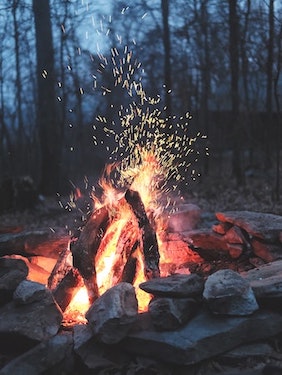
Dispersed Camping FAQs
Dispersed Camping FAQs
Here are a few questions about different dispersed camping that get asked a lot, and their answers:
Is Dispersed Camping Legal in National Parks?
Most national parks do not allow dispersed camping. You might have to check in with the park you have in mind before deciding to go there. The good thing is, national forests and BLM land border many national parks, if you are visiting National Parks, you can drive a little further and setup your dispersed campsite outside the park.
Where Can You Camp For Free?
The United States is full of places that you can camp for free; there is a wide range of dispersed camping options on many different types of public land. These include:
- BLM (Bureau of Land Management) land
- National Forests
- Some state parks
How Do You Know Where it’s Legal to Disperse Camp?
The fastest way to achieve this is to contact the closest Forest Service office in the area. You may also be able to find the information online, but always confirm with your local land manager and ask for any additional information, rules, or requirements.
What is Boondocking?
Boondocking is essentially dispersed camping. It means camping on public land —besides developed campsites and recreational sites— for free.
What is Stealth Camping?
Stealth camping means to camp at an unestablished wilderness site. It can also be sleeping overnight in your vehicle in a manner that won’t draw unnecessary attention.
Dispersed Camping Resources
Dispersed Camping Resources, Apps and Maps
Here are a few dispersed camping resources, apps, maps, and books that will help you get camping faster than if you were to scour Google Maps. These apps are a great way to help you speed up your research, make sure you’re following the right set of rules, and find a great place to camp.
- www.boondocking.org: Locate free camping
- Freecampsites.net: Find free campsites near your location or where you’re planning to go.
- The Vanlife App: Find campsites, gatherings, or facilities close by.
- Recreation.gov: A guide to campsites, recreational activities, or other facilities.
- Tentrr App: Helps connect you to landowners who are willing to share their land with campers.
- The Dyrt App: Includes reviews of the top campsites around the country.
- Campendium: This is a great app that lets you search for free camping in every state. You can look at pictures, read reviews, and even check the cell coverage of your prospective campground. It works on both mobile phones and desktops.
- Free Roam: This mobile and desktop app has many useful features: toggling on satellite, BLM, and National Forest dispersed camping maps to find public land. You can also check cell coverage by the network, and if you sign up for a free account, you can save your waypoints and my sites for future use.
- iOverlander: This app has campsites recommended by users and other necessary information like places to get water and dump refuse. The only downside to this app is that it depends on users to update it constantly for accurate updates.
- OnX Maps: Allows you to see who owns land (including private land) so that you can make sure you follow all relevant rules.
- Benchmark Road Map and Recreation Atlas (for the United States only): These atlases consist of detailed state maps – and it’s always great to have a printed backup incase you lose cell service. They outline BLM, National Forests, and other land agencies. They also contain necessary information such as water sources and motorable roads.
Free Overnight Parking
If you’re planning a long drive to spend some quality time dispersed camping in the great outdoors, there are a few businesses that offer free overnight parking to help keep your trip costs down and keep you on the go. Here are some spots that offer free overnight parking, or “camping” for people:
Walmart
Walmart is well known for allowing folks to spend the night in their parking lot and is a great option for resting on your way to the great outdoors. Some tips to have a smooth experience:
- Get to the parking lot late in the evening and be prepared to leave as early as possible.
- Make sure to park somewhere that won’t disturb the day-to-day occurrences like deliveries of products and customer parking.
- You must do everything in your vehicle.
- No grills, foldable chairs, stoves, or any other camping equipment
Casinos
Many casinos allow trailers, vans, and RVs to park overnight for free. You still have to be unobtrusive and keep all your activities in your vehicle.
